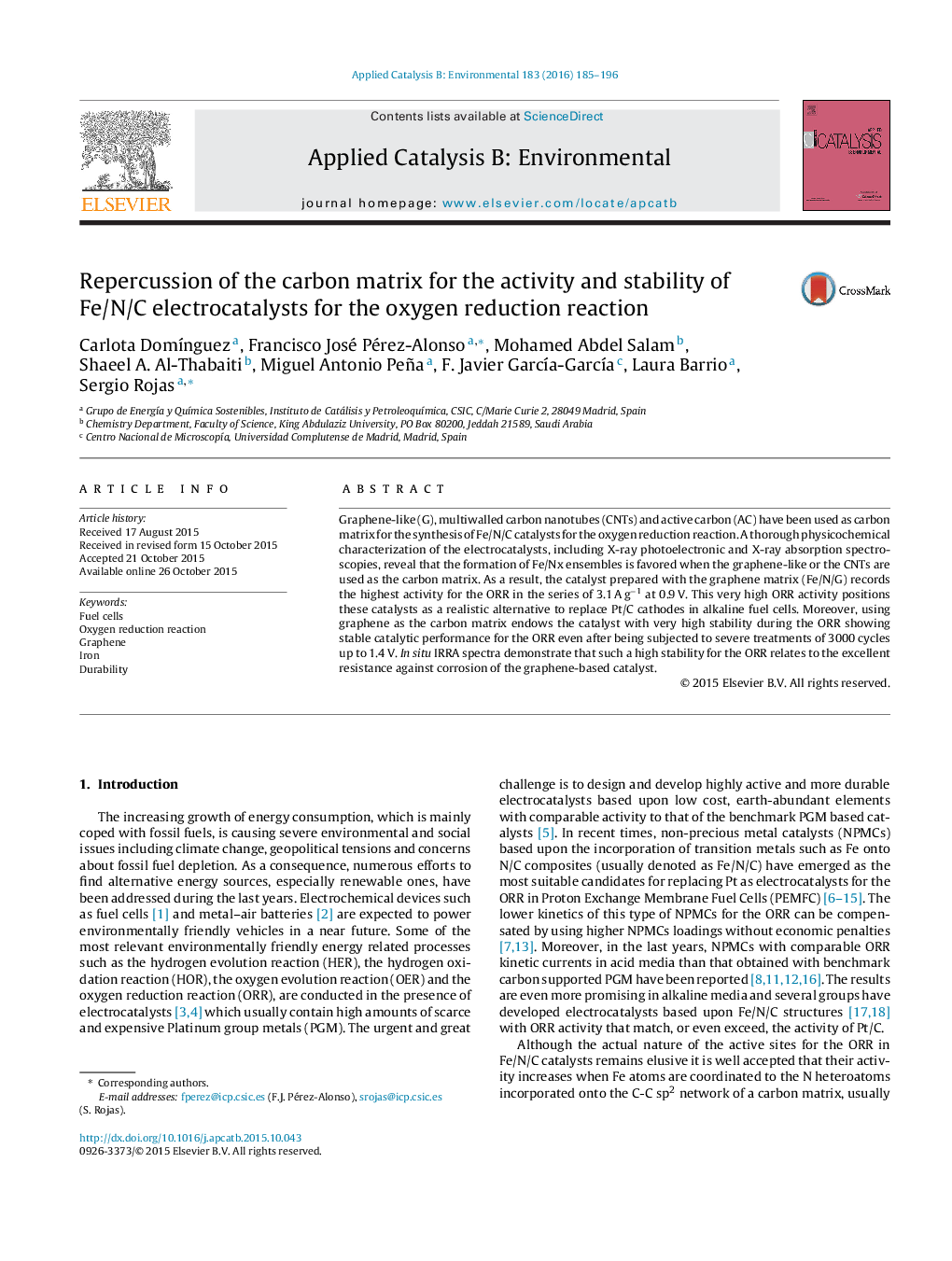| Article ID | Journal | Published Year | Pages | File Type |
|---|---|---|---|---|
| 45147 | Applied Catalysis B: Environmental | 2016 | 12 Pages |
•Graphene, CNTs and active carbon are suitable matrixes for Fe/N/C electrocatalysts.•Graphene and CNTs lead to the most active and stable catalysts during the ORR.•Graphene and CNTs promote the formation of Fe/N surface ensembles.•Oxidation of the carbon matrix at high potentials causes catalyst deactivation.
Graphene-like (G), multiwalled carbon nanotubes (CNTs) and active carbon (AC) have been used as carbon matrix for the synthesis of Fe/N/C catalysts for the oxygen reduction reaction. A thorough physicochemical characterization of the electrocatalysts, including X-ray photoelectronic and X-ray absorption spectroscopies, reveal that the formation of Fe/Nx ensembles is favored when the graphene-like or the CNTs are used as the carbon matrix. As a result, the catalyst prepared with the graphene matrix (Fe/N/G) records the highest activity for the ORR in the series of 3.1 A g−1 at 0.9 V. This very high ORR activity positions these catalysts as a realistic alternative to replace Pt/C cathodes in alkaline fuel cells. Moreover, using graphene as the carbon matrix endows the catalyst with very high stability during the ORR showing stable catalytic performance for the ORR even after being subjected to severe treatments of 3000 cycles up to 1.4 V. In situ IRRA spectra demonstrate that such a high stability for the ORR relates to the excellent resistance against corrosion of the graphene-based catalyst.
Graphical abstractFigure optionsDownload full-size imageDownload as PowerPoint slide
